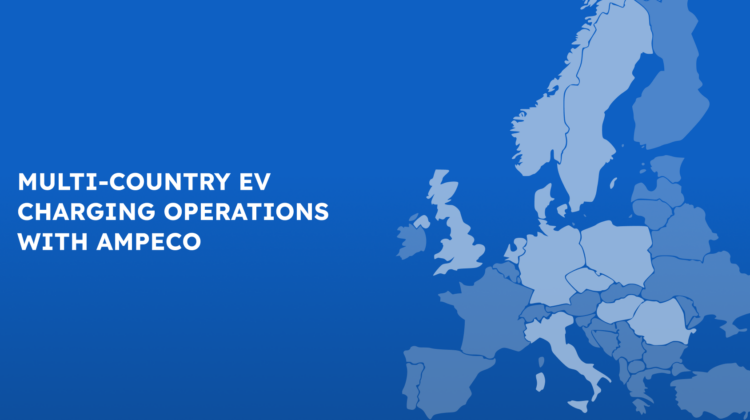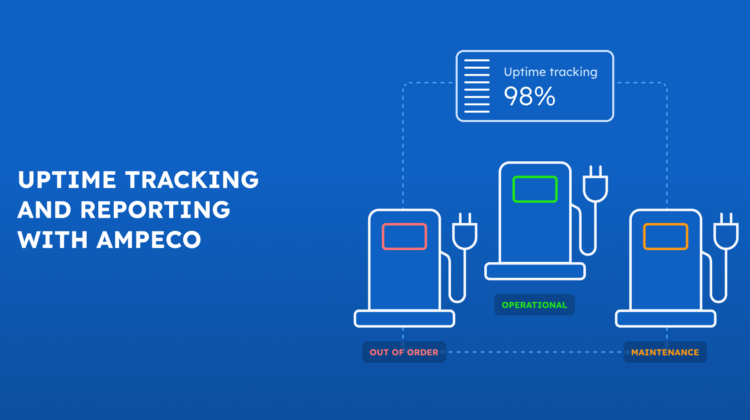The sunny future of EV charging
Home charging CPOs are increasingly turning to solar integration to meet consumer demands. With this post, we explore the operational dynamics and introduce AMPECO’s solar EV charging solution, designed to empower CPOs to enhance their offerings, upsell to existing customers, and establish a strategic niche in the market.
Solar power has been on an upward trajectory, becoming the fastest-growing source of electricity for nearly two decades straight. Countries like Australia, the Netherlands, and Germany have embraced residential solar at impressive rates. With falling costs, technological advancements, and a global commitment to sustainability, solar energy has firmly established itself in the energy mix.
What is solar charging?
Solar charging optimizes the charging process by leveraging available solar energy to charge electric vehicles. After meeting household energy needs, surplus solar power, also known as PV excess, can be used for EV charging, offering cost savings compared to exporting excess solar energy to the grid. Ideally, EVs can be charged solely with surplus solar energy, reducing reliance on grid power. It’s a win-win scenario for both consumers and the planet.
A typical residential solar charging setup
At the heart of any solar EV charging setup are the solar panels, which capture sunlight and convert it into electricity. Inverters play a vital role in this process, turning solar DC electricity into readily usable AC electricity for the home. Solar charge controllers regulate and manage solar panel energy generation fluctuations. Finally, the CT clamp detects the amount of energy exported back to the grid from the solar panels. This excess solar energy can then be harnessed to charge the EV.
Solar charging typically relies on the charger or the CT clamp to detect the energy exported to the grid and, if needed, to override the charging schedule applied by the CPMS. The charger effectively “listens” for moments when surplus solar energy is available, which would otherwise be exported to the grid. This dynamic process, known as “export matching,” involves the charger consuming all available excess energy, reducing or eliminating energy exports to the grid in real-time.
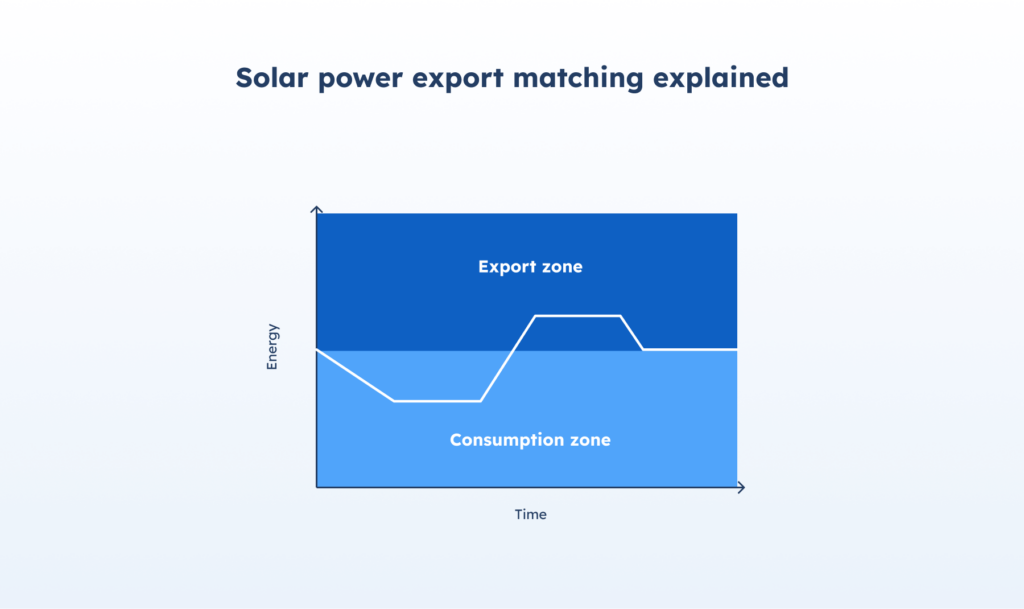
A CPO’s solar charging challenges
There is no one-size-fits-all solution for solar EV charging. Typically, it requires coordination between the charger and additional hardware devices, such as the CT clamp on one hand and the CPMS (the software) on the other.
The CPMS controls the EV charging process via OCPP, but the latter is not designed to support solar-specific features. Therefore, it requires additional effort on behalf of the charger manufacturer and the CPMS provider to expand the OCPP capabilities with custom configuration keys and data transfer messages, which are like commands.
Customers often struggle to obtain clear reporting regarding their energy consumption. Typically, they see a charge session summary with details about the energy consumed but lack information on the specific breakdown between solar and grid sources. This issue stems from the system requiring multiple hardware devices beyond the charger, which often do not communicate effectively with each other, making it difficult to track and report energy sources accurately.
Solar energy might not produce enough power during cloudy or bad weather to fully power a level 2 EV charger. EV chargers tackle this issue using a CT clamp, which tracks energy flow between the home and the grid. When surplus solar energy is detected, the EV charging speed is adjusted accordingly. However, since power usage and solar generation fluctuate, the charging station consumption continuously adapts to match the excess solar output.
Advanced solar charging capabilities enabled by AMPECO
For solar EV charging to work effectively, there are two main prerequisites:
- The charger must support solar charging configuration keys. Since not all chargers have the same configuration keys for solar control, additional developments may be needed on both sides.
- The site electrical set-up must include a CT clamp to accurately measure the available solar power.
Optimized use of solar power
AMPECO intelligently controls EV charging to prioritize the use of excess solar energy through the use of smart scheduling. When solar production is insufficient, it seamlessly adjusts the applied schedule to top up from the grid overnight, taking advantage of off-peak rates. The platform enables scheduled charging sessions to align with solar availability and grid periods automatically.
Creative approaches to using OCPP to enable solar charging
The AMPECO platform enables and controls the charger’s solar charging functionality via custom OCPP configuration keys. Although the OCPP protocol isn’t inherently designed for solar integration, we have found innovative approaches to using configuration keys to enable this functionality.
Configuration keys are used to define various settings and parameters that control the charger’s behavior during a charging session. There are mandatory keys required by the OCPP protocol, which each charger supports, but apart from that, each manufacturer can add others to control different aspects of charger behavior. AMPECO relies on three main keys for solar energy management:
SolarMode: turns solar charging functionality on or off and allows the charger to override scheduling when excess solar energy is detected.
SolarCurrentFromGrid: maximizes available excess solar energy utilization while ensuring the vehicle receives sufficient charging current. It achieves this by setting a maximum current limit from the grid during solar charging.
SolarStableTime: instructs the charger to maintain charging from the grid for a specified time after detecting a decrease in available solar energy. This prevents frequent start-stop charging cycles, which can harm the vehicle’s battery health.
Easy solar charging control with our white-label app
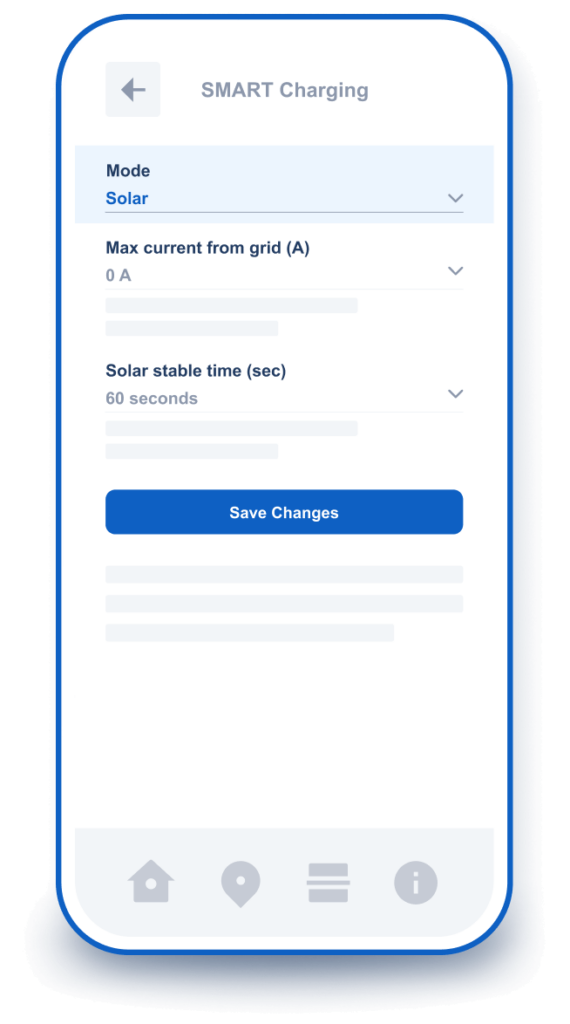
In “Solar” mode, the AMPECO platform sets a charging schedule with a limit of 0, meaning the charger doesn’t initiate charging by default. Instead, it waits to detect excess solar energy and only then charges the vehicle using this surplus.
For other smart charging modes, like “Scheduled,” when the “Use excess solar” option is enabled, the app applies a schedule as usual. However, if excess solar energy is detected, the charger overrides this schedule to charge outside the set times.
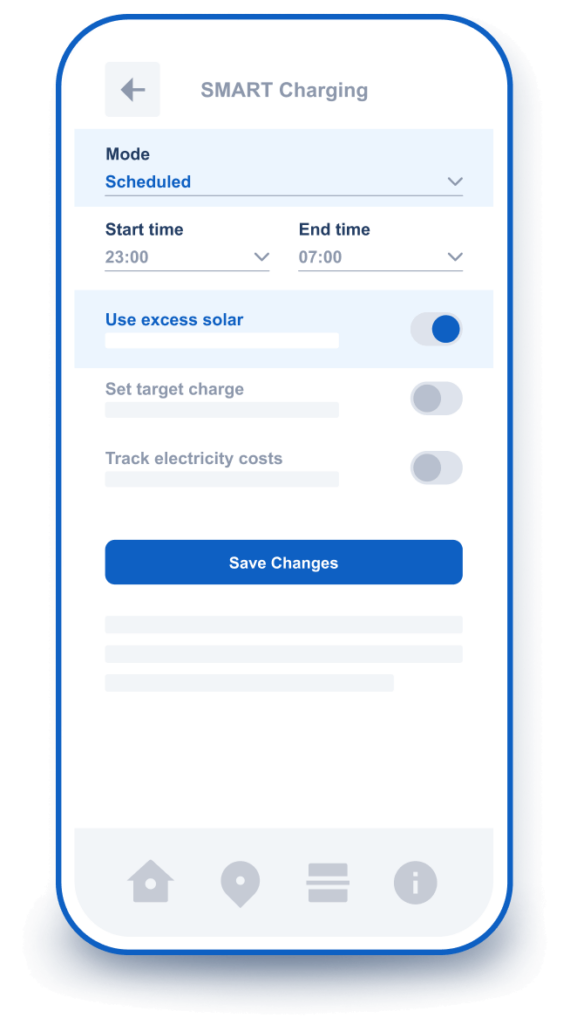
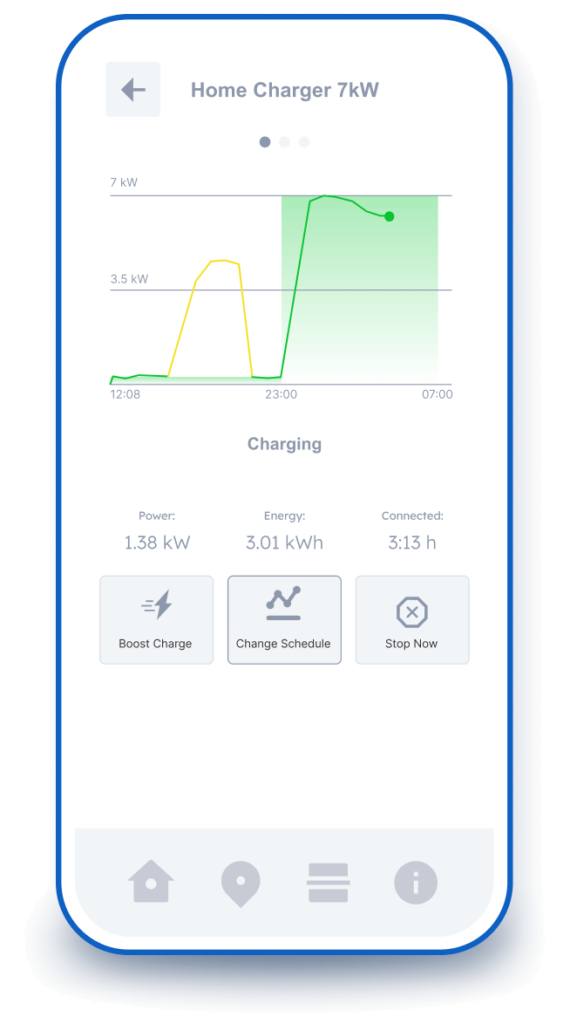
In “Solar” mode, charging occurs only when excess solar energy is available, ensuring efficient use. For other smart charging modes, the app graphically indicates any schedule overrides with a yellow color on the charging graph, keeping users informed.
We’re working on enhancing the user experience by accurately reporting the split between solar and grid consumption within a single charging session. This feature, currently in development, will provide users with transparent insights into their energy usage, enhancing their charging experience.
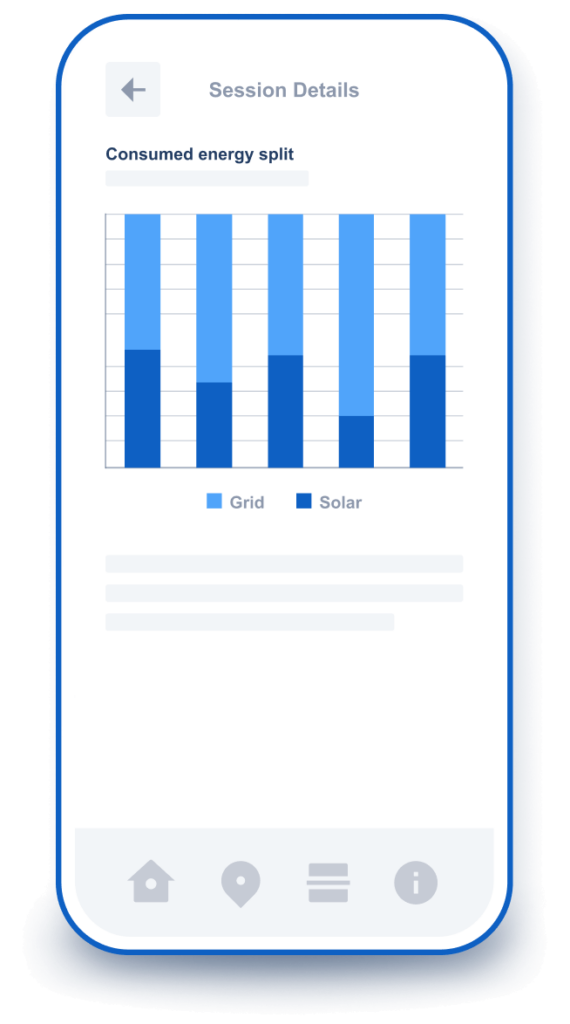
Innovative solar integration functionalities
AMPECO can integrate with solar inverters and utilize their APIs to access data regarding solar energy production. This data isn’t limited to charging alone; we leverage it to develop innovative functionalities tailored to this specific use case.
The road to solar-powered EVs
AMPECO offers practical solar charging solutions for forward-thinking CPOs exploring solar integration with efficient control over sessions and insightful energy consumption data. Our platform tackles challenges head-on to seamlessly integrate solar power into EV charging. With AMPECO, CPOs can upgrade their offerings, upsell to existing customers, and strategically position themselves in this growing market.
Ready to unlock the potential of solar charging? Schedule a demo today and talk to one of our EV charging experts.









